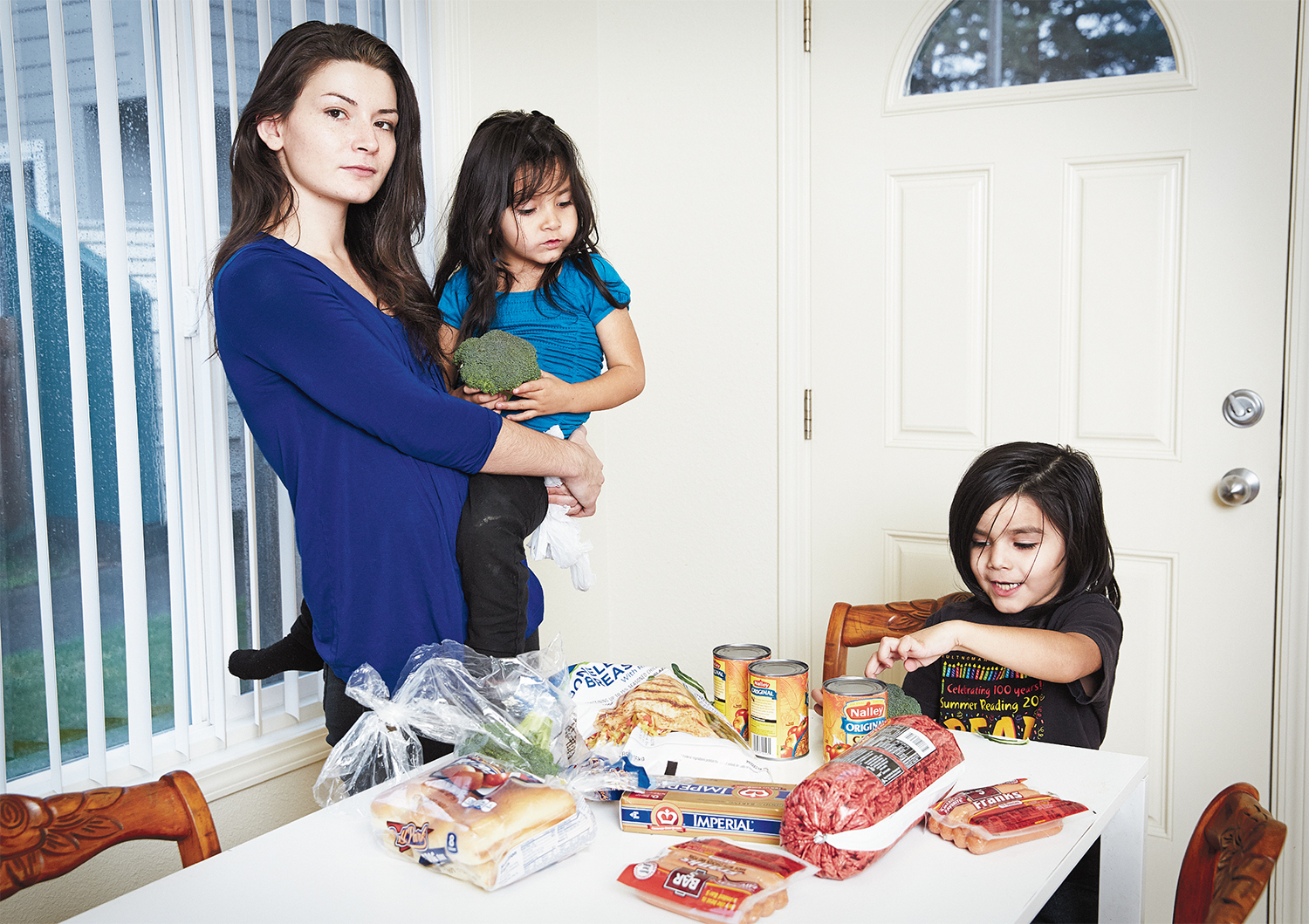- Jennifer Noonan, a 24-year-old single mother in Portland, Oregon, has relied on federal benefit programs like the Supplemental Nutrition Assistance Program (SNAP, formerly known as food stamps) for much of the past three years. She has been unemployed for most of that time.
- The 2009 federal economic stimulus package included an increase in SNAP benefits that expired in late 2013. Noonan lost about $50 of monthly benefits. She is pictured here with her children and food she bought with around $20 in SNAP benefits.
- More than 47.6 million (one in seven) Americans received SNAP benefits in 2013. The average monthly benefit for a household of four was $274.98
- By mid-month, the average SNAP household has spent three-quarters of its benefits.
- Food stamps can’t be used to purchase hot meals, Halloween pumpkins, vitamins, or soap (among other items). Birthday cakes are eligible if non-food decorations are less than 50 percent of the cake’s value.
- In 2011, Little Caesars pizza franchises in Portland established separate corporate entities inside stores so they could sell cold pizzas to SNAP recipients, taking advantage of ambiguities in the USDA’s ban on purchasing hot food.
- Per capita consumption of fresh broccoli in the U.S. rose from 1.4 pounds per year in 1980 to 5.6 pounds per year in 2010. Hot dog sales have been dropping since 2009.
- A 2011 review of studies on the relationship between obesity and poverty found that “food stamp participation may exacerbate obesity.”
- In its latest annual report, Walmart listed impending cuts to SNAP benefits among the risks the corporation faces. According to reporting by the Wall Street Journal, Walmart takes in 18 percent of all SNAP expenditures in America.
- A 20-year study of children whose growth had been stunted by hunger during infancy examined the impact of government food aid versus the impact of weekly parenting instruction from a trained health aid. The study found “no significant benefits” from food aid—but higher IQ and educational attainment, less social inhibition, fewer depression symptoms, and less violent behavior from the parenting instruction.

Click on the image above for a larger version of this issue’s In the Picture selection. (Photo: Jeff Riedel)
For more on the science of society, and to support our work, sign up for our free email newsletters and subscribe to our bimonthly magazine. Digital editions are available in the App Store (iPad) and on Google Play (Android) and Zinio (Android, iPad, PC/MAC, iPhone, and Win8).


